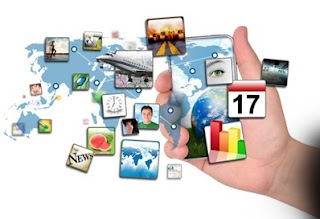After effect of a Pandemic that connects us with mobile apps
Globally, the COVID-19 epidemic has caused a severe problem. Due to social isolation, house confinement, and self-isolation, everyone has been experiencing severe psychological suffering. If we are talking about business, Siddharth Mehta IL&FS has also faced tight lockdowns like other industrialists that have caused the global economy to collapse. Unexpected downtime has caused businesses to close. Major financial shocks have hit sectors including manufacturing, travel and tourism, real estate, fashion, sports, entertainment, and hyperlocal marketplaces. Even if all of these influences are enough to break our will, mobile applications have emerged as our support system. While everyone is cooped up in their homes with little to no social interaction, they have stepped in as a reliable ally to save the day.
There are certain smartphone applications that have made life much simpler for us while under house arrest during this pandemic. Due to the ban on leaving the house, demand for on-demand applications, shopping apps, entertainment apps, and digital payment apps has soared throughout the crisis.
1: Healthcare Mobile Apps
An economy's backbone is a robust healthcare sector. The healthcare industry was crucial in informing the public and saving thousands of lives during COVID-19.
In order to use digital platforms to assist individuals weather the disruption caused by the Coronavirus, MEDtech firms are working with healthcare institutions and aspiring entrepreneurs. In this stressful environment, people's physical, mental, and emotional health is being taken care of by everything from online fitness apps to medication delivery apps to on-demand physicians apps. Healthcare specialists assist individuals in overcoming negativity, anxiety, and depression through recorded films, live sessions, webinars, and other formats. Applications for on-demand medication delivery offer prompt delivery to the door to enable persons who are afraid of accidentally coming into contact with viruses.
2: Educational Apps
The effects of Coronavirus are not an exception in the education sector. Students have been particularly heavily struck as a result of the disruption to their education because, after all, education is the cornerstone of their profession.
All universities and institutions are closed for an undetermined amount of time. To support students' learning, development, and success, educational institutions all around the world are turning to digital platforms and using digital distribution methods. In addition to video conferencing apps like Zoom, the popularity of top eLearning apps like Coursera, Google Classroom, LinkedIn Learning, Duolingo, edX, Alison, Harvard University mobile app, etc., have skyrocketed as a result of their ability to help students receive continuous and seamless education
3: Entertainment Apps
Nothing but fun is a tried-and-true strategy to prevent us all from becoming overburdened with unneeded tension.
No one could imagine going a day without binge-watching Netflix or spending a lot of time on their favorite social media platforms, particularly if they are frequent tweeters and Instagram users. The epidemic has seen a sharp increase in usage of social media applications including WhatsApp, Instagram, Facebook, Twitter, Reddit, Pinterest, Tik Tok, Likee, and Tumblr as well as entertainment apps like Netflix, Amazon Prime, YouTube, HBO Now, Spotify, Google Play Music, Snapchat, IMDb, etc. Everyone has been kept up to speed on the most recent events worldwide thanks to news apps and social media applications like Twitter and Facebook.
4: Remote Work Apps
Remote work culture was not acknowledged as a fundamental work culture until the COVID–19 incidents, but it is now a new workplace reality.
Without workplace programs like Slack, Skype, zoom cloud meetings, and others, it is impossible to work efficiently from home. Businesses have adopted an elastic workplace reality so that remote workers may experience a responsive, zero-latency transition. As apps for video conferencing, web conferencing, instant messaging, and group chats assisted professionals in getting work done Siddharth Mehta IL&FS really appreciates these remote work applications. Zoom, Skype, Slack, Ding Talk, Zapier, Dropbox, VooV Meeting, Pocket, Evernote, and Microsoft Teams are some of the most popular tools for remote work.





Comments
Post a Comment